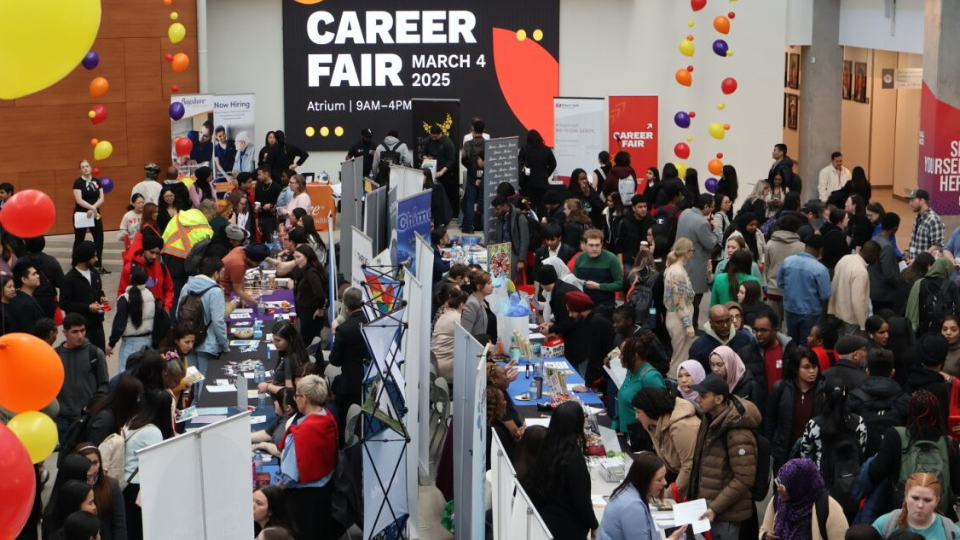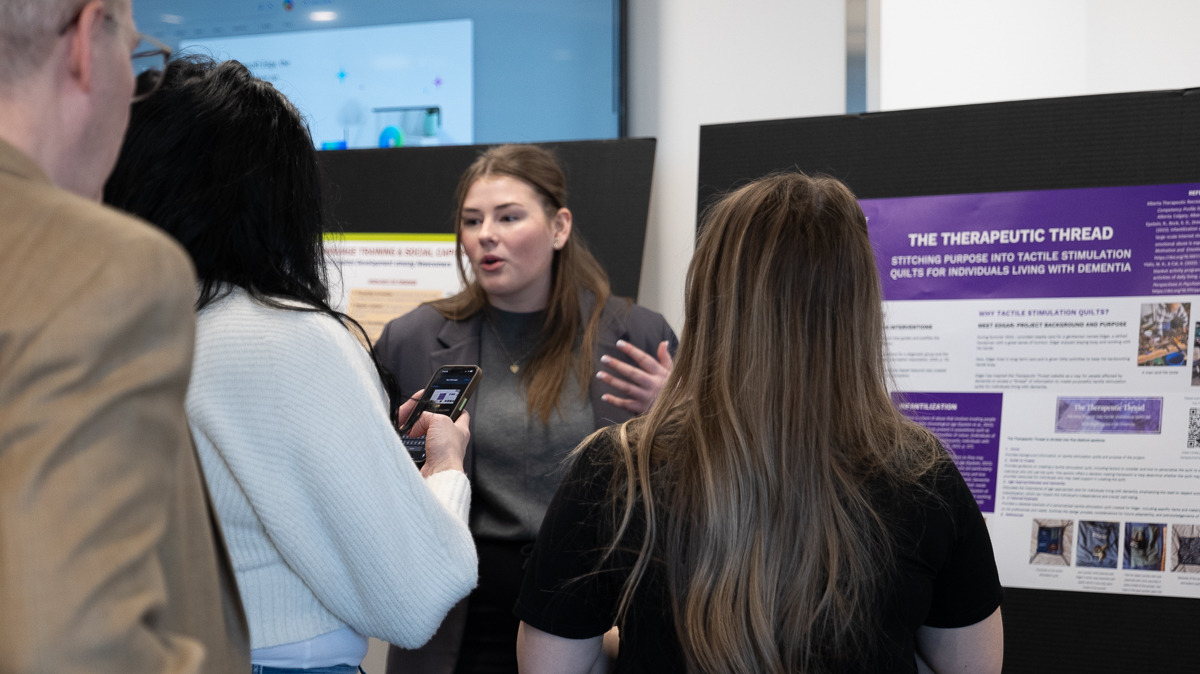Interrupting Bias: Creating Space for Inclusion
March 6, 2025

Do you trust your gut instincts about people or situations? Have you ever made a snap judgment about someone based on appearance or background? We all have—and it's likely your unconscious bias at work. This built-in mechanism affects everyone in every setting, including in the workplace. Let's talk about what it is and why it matters.
What is unconscious bias?
Brooke Leifso, Research Chair at the Colbourne Institute for Inclusive Leadership, defines unconscious biases as thoughts and feelings that people are unaware of but that can govern their decisions and actions. The origins of unconscious bias aren’t fully understood, but some suggest it’s hard-wired into our neurology for survival. Our brains extrapolate from past experiences to assess risks and benefits to help us navigate the world—sometimes accurately, sometimes not.
In the modern world, unconscious bias may no longer be about survival, at least for the most part, but it certainly affects how we interact with people and the world around us. While our unconscious bias is often hard at work, trying to keep us safe, it can run on stereotypes or incorrect assumptions, which can impede and harm us too.
For example, our biases might lead us to assume that all men are better at home repairs, or that older people are less technologically savvy, or that younger people lack drive and work ethic. These biases influence our interactions, often without us even realizing it.
Common bias types
Bias can stem from various assumptions shaped by our social and cultural norms, including gender, age, or racial biases. However, bias can arise from any unconscious assumption we make. Some other common types include:
- Halo/horns effect: Two opposite sides of the same coin, the Halo Effect occurs when we assume that someone who excels in one area will also excel in others. On the other hand, the Horns Effect happens when we assume that someone who struggles in one area will fail in others as well.
- Dunning-Kruger effect: This bias occurs when people with limited knowledge overestimate their expertise. The less they know, the more confident they feel. Meanwhile, experts often downplay their skills because they understand the complexities
- Affinity bias: This happens when we favour people who share similar interests, backgrounds, or experiences to ourselves. It can lead to favouritism in hiring or promotions, as we unconsciously gravitate toward those who remind us of ourselves.
- Confirmation bias: This is the tendency to focus on information that confirms our pre-existing beliefs or stereotypes, while disregarding information that contradicts them.
Unconscious bias in the workplace
Understanding how unconscious bias works helps us see its influence on major workplace decisions, such as who we hire, promote, or let go. But unconscious bias isn’t limited to major decisions—it can affect even the smallest interactions between coworkers, supervisors, and subordinates. Brooke uses time management as an example of a small, everyday interaction between coworkers, which may convey more meaning than we realize. “Is being on time for meetings important? What traits do latecomers typically have? What about those who get frustrated when meetings start late?” Your answers may reveal biases that influence how you judge your coworkers’ behavior—and even their abilities.
Are these frustrations simply harmless and inevitable experiences of the workplace? Not always. Left unchecked, biases can affect collaboration, communication, and decision-making, and deepen workplace inequalities. When organizations ignore unconscious bias, growth can stall, and conflicts may go unresolved, creating deeper divisions.
Workplaces require us to navigate diverse people and experiences in ways that our personal lives may not. “People enter the workplace context having been shaped by their life experiences and the socialization process in their culture,” Brooke explains. “Unconscious biases are embedded in this socialization process, and we are simply unaware of how they show up at work unless we consciously practice interrupting them.”
How can we identify when we are bumping into our biases?
The key to managing bias is to actively identify and interrupt it—but how? Brooke suggests paying attention to your emotional reactions. “Unconscious biases are unchecked assumptions, like ‘everyone knows to be on time,’ and they often come with an emotional response. If you feel irritated, surprised, or frustrated when someone behaves differently than expected, your biases may be at play. For me, the word ‘rude’ is a red flag. If I think someone is being rude, it’s a cue to check whether my cultural preferences or biases are influencing my judgment.”
She adds that bias isn’t just about discomfort—it can also shape who we naturally gravitate toward. “If certain colleagues feel safer or more comfortable to be around—maybe you joke with them more—take a moment to reflect. Is unconscious bias (the affinity bias) influencing who you connect with and who you don’t?”
What can I do about my own bias?
She suggests taking a pause in these moments. “Check your assumptions with colleagues and see where there might be flexibility to accommodate multiple perspectives. Recognize that you are allowed to have preferences and let past experiences inform you, but build an awareness. Be curious about yourself to learn. Also ask that of your colleagues.”
To start checking your assumptions, there are a few tools and questions to consider. The Harvard Implicit Bias test is an eye-opening resource for identifying your hidden biases. You can also reflect on the media you consume—TV shows, news, social media. What messages do they reinforce? What do you find funny? Are there biases in the content you engage with?
Disrupting organizational bias
While confronting individual assumptions is a good start, it is also important for organizations to understand and disrupt bias on a larger systemic level. When biases are exercised unchecked at the leadership level, this has a great impact on the organization as a whole.
The first step, according to Brooke, is for workplaces to support employees by avoiding the assumption that "common sense" is universal and by being transparent about workplace norms. “Ideally workplace norms are agreed upon by a group of people ahead of time (For example: in person meetings will allow a 5-minute grace period and then start with people present. Please inform meeting attendees if you will be late).”
Secondly, it’s important to create spaces and opportunities for employees and the leadership team to learn about different types of biases and reflect on their own. Consider providing a neutral course or inviting an external facilitator to explain bias and guide the team through conversations. “Curiosity can be fostered through inclusive environments and safe spaces to reflect on or discuss moments when biases might be present,” she adds.
To minimize the impact of unconscious bias in hiring, promotion, and other decision-making processes, Brooke recommends several strategies:
- Create psychological safety: Before inviting diverse team members, ensure the environment is psychologically safe for them to thrive. Take a critical look at the existing workplace culture and identify who is favoured and why. What internal changes can be made before introducing diverse perspectives?
- Policy and protocol review: Conduct a policy and protocol review, consider an Intersectional/GBA+ lens, and hold regular training for staff to build awareness around biases. "But as always, some learning is only through doing," Brooke emphasizes.
- Anonymize resumes: To prevent biases from influencing initial assessments, anonymize resumes by removing names and locations. This helps ensure that the focus remains on qualifications rather than irrelevant details that could trigger bias.
- Transparency in decisions: Be transparent about why certain decisions are made, especially when candidates aren’t chosen. Having clear reasons for decisions and sharing them with candidates can reduce misunderstandings and feelings of unfairness.
- Clear pathways for promotions: Create clear pathways for promotion within the organization, and recognize possible demands on employees’ time. For example, if management requires being on call during evenings and weekends, it might exclude qualified candidates, particularly those balancing caregiving responsibilities. Explore ways to accommodate caregivers, such as adjusting schedules or creating a structure that supports their career advancement.
Brooke concludes with this last bit of advice: "Create continuous avenues for transparency and reflection. Create a culture of safe accountability: asking people to explain their decision-making, proactive metrics, shared guidelines of understanding. Common sense isn’t always common. There is so much learning about ourselves and others when we stay kindly curious regarding another’s perspective or motivations.”
Interested in disrupting bias in your organization? The Colbourne Centre for Inclusive Leadership offers custom training and consulting in inclusive practices, including bias management. Contact us today for a free 30-minute consultation.


